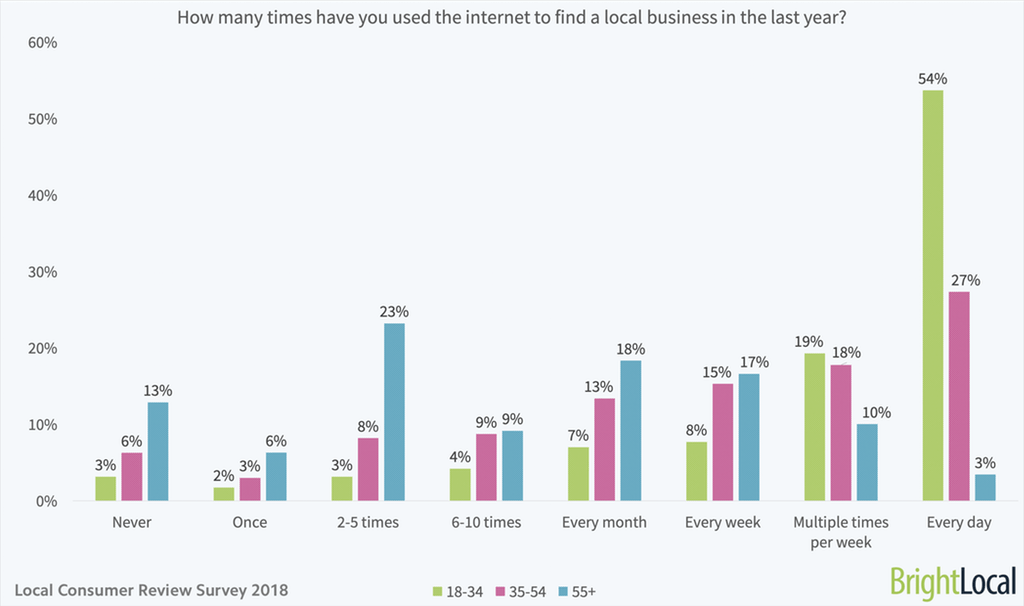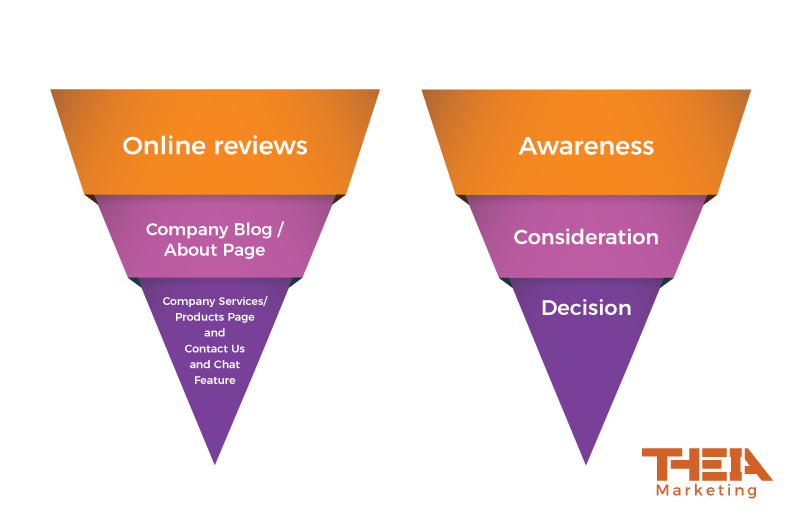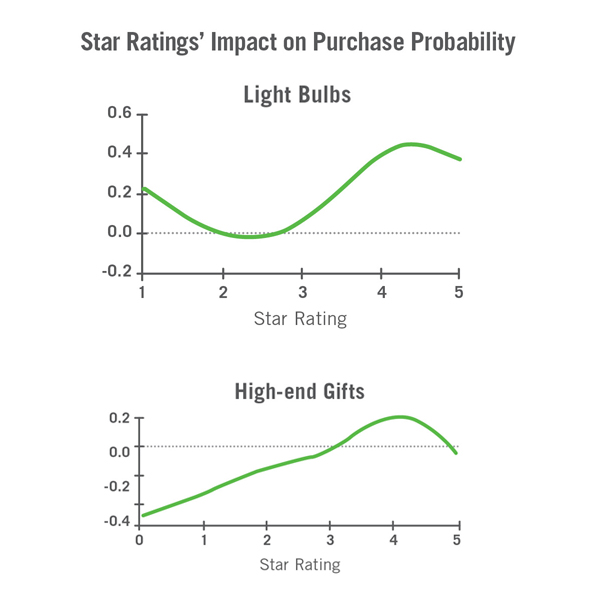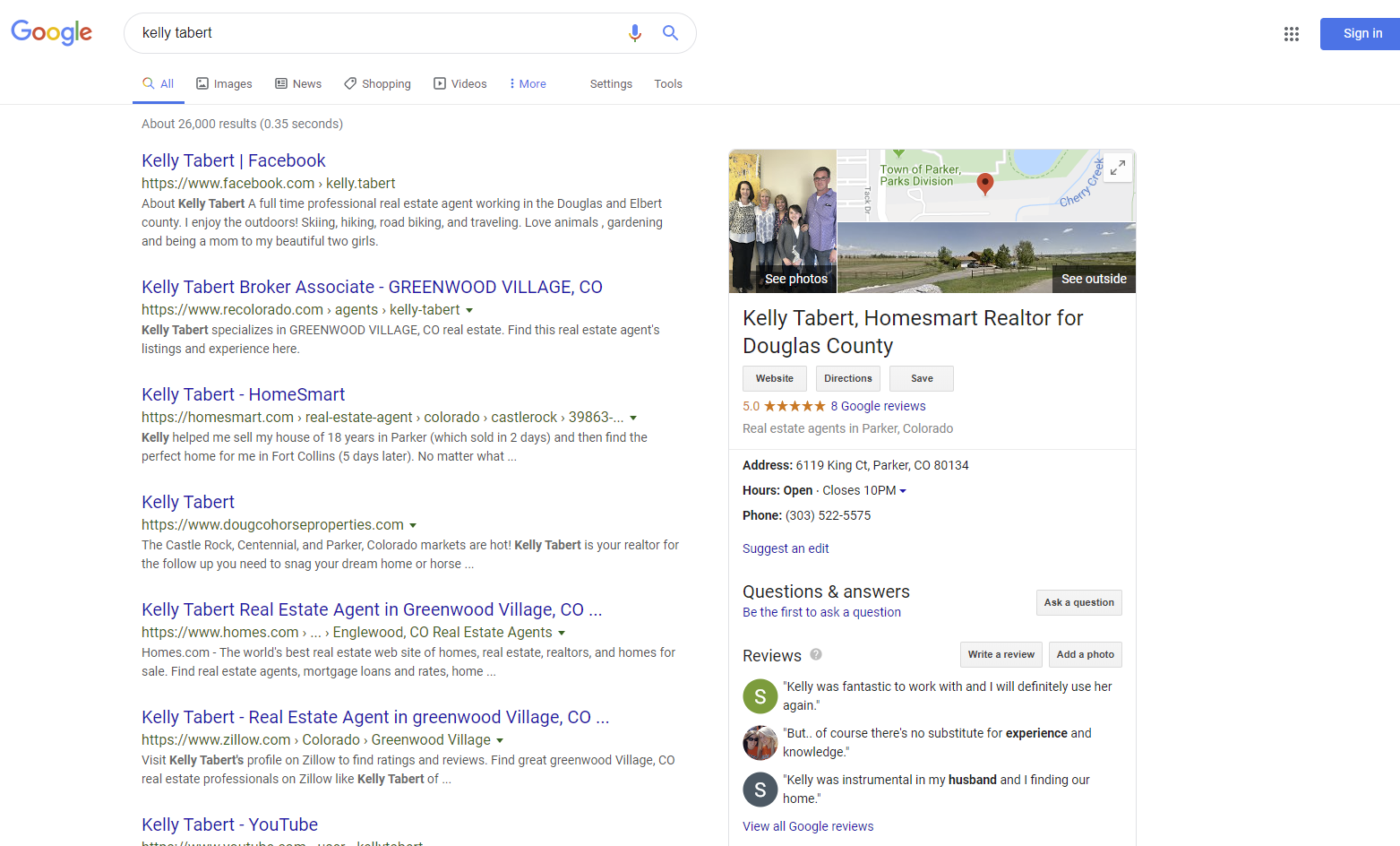Customer and client review websites are increasingly important as more consumers use the internet to find businesses. According the BrightLocal Local Consumer Review Survey, 54% of consumers ages 18-34 use the internet every day to find businesses. That means decision makers are doing initial market research on your B2B brand before picking up the phone or forming a relationship with you.

Where are reviews in the Customer Journey?
Nick Hajili explained this in the International Journal of Market Research. “Trust, encouraged by social media, significantly affects the intention to buy,” said Hajili. “Therefore, trust has a significant role in ecommerce by directly influencing intention to buy and indirectly influencing perceived usefulness.”
Online reviews help customers form educated opinions of a product or service, which is why word-of-mouth marketing is so powerful. Data from BrightLocal found 91% of shoppers between the ages 18-34 believe reviews are as trustworthy as personal recommendations.
Customer reviews are part of what I call the shadow funnel, where consumers and other businesses do research about your company before deciding to buy. So remember there's the awareness, consideration and decision funnel. Today, that funnel online looks like first prospective clients would go to online reviews, then they would go to your company blog. Then, if they're that interested in your company, then they'll start looking at your services and your “Contact Us Now” page or your chat feature.

Increase Conversion Rates – Just by Displaying Reviews
Just by displaying reviews on your website and initial Google My Business search, you increase the chance of a customer converting by 270% according to the Spiegel Research Center.
Reviews have a greater impact on higher-priced services and products. According to the Speigel Research Center, research found that when reviews were displayed for a lower-priced product, the conversion rate increased 190%. However, for a higher-priced product, the conversion rate increased 380%. Having a client review on your case studies will help boost its credibility for those service lines.
In the mind of a prospective client, higher-priced services come with more risk. Therefore, the more information at the customer’s fingertips, the more confident they are about making the purchase. It’s important to display case studies with client reviews on your website, and link to your product pages.
Always having five stars may be too good to be true for prospective clients. Prospective clients are more likely to buy in the 4.0 to 4.7 star range. So it’s good to have mostly positive reviews mixed with a small proportion of negative reviews.

Establish Trust and Authenticity with Your Negative Reviews
Keep things honest and open with your clients. Having negative reviews on your site shows customers you aren’t afraid of them and seeing your products in its entirety. 95 percent of consumers get suspicious of positive reviews when there are no negative reviews, according to Entrepreneur.
It builds trust with you and your clients. It reinforces that you want to be fully transparent with them. Prospective clients who go out of their way to read bad reviews convert 67% higher than the average consumer, according to Reevoo.com.
How to Respond to Negative Reviews
How your B2B company addresses a bad review speaks volumes about your customer experience. You are showing both current and prospective clients that you care about their feedback and opinions. Remember to respond to both negative and positive reviews.
- Empathize with the customer’s concerns. Remember it’s not the end of the world. You’re talking to just one person at one company.
- Thank the client for their feedback. Let current and prospective clients know you value their input and provide a phone number for customer care.
- Take the issue offline. If it’s prioritized by you CEO, provide your CEO’s phone number.
- Take responsibility and apologize. Even if it’s not your fault, and there will be times when this is true, say sorry anyway. Besides, people don’t like businesses that are too perfect or too proud to apologize.
- Offer a discount on their next services. It doesn’t have to be a huge discount, but offering a service at a discounted rate let’s you know you care. Ask for a second chance.
If someone gave you a fake negative review, it’s also important to respond.
- For a fake review, respond and say that you do not have their name or phone number on record as a client.
Strategies for Monitoring and Getting Reviews
1. How are you doing in search results
Make sure you have at minimum, a Google My Business page. That is what appears on the right hand side of the page with Google search results. Make sure it’s not a knowledge panel, which can’t garner reviews for your business.
Also, make sure you’re in the directories of review sites. People trust review sites more than claims on your company website because an independent review site is less likely to skew reviews in favor of your company. Here are a list of review sites and directories your B2B technical services business should be listed in.
2. Monitor Your Online Reputation and Know Your Competition
Keep a spreadsheet on the average number of stars you have and reviews from multiple sources. You can include them in case studies on your website.
The Internet rewards your online reputation based on how well you treat your clients. Make sure you have an outstanding customer service staff and onboarding process. If you discover through your reviews that you’re not delighting your clients as much as you should, develop systems to make sure you have an outstanding experience for clients when they use your services or products.
Also, monitor your competitor’s reviews. What review and directory sites are they on? How many reviews do they have? What are the star ratings and what are the reviews saying? This can be useful in your marketing and sales materials.
3. Ask for Reviews, But Don’t Incentivize
Many clients just don’t think about providing a review for your company. Customer reviews help convert prospective clients—they are one of the most persuasive pieces of content online. Don’t be afraid to ask for reviews and testimonials from past and current clients.
Your client shouldn’t say no to the ask if they had a good experience. Promote positive ratings on social media, landing pages, case studies, and service pages. You can even have a scroller of all your reviews on your home page.
Try to have a system in place to do this. For example, on the last Friday of every month, you can call and send an email for clients to do a review for you on Google My Business, or any one of our recommended review sites for B2B technical services.
It is wise not to incentivize these reviews. UrthBox, a subscription snack box company, incentivized reviews in 2017. UrthBox representatives offered to send consumers with a free snack box if they posted a positive review on the Better Business Bureau website. To settle the case, UrthBox has to pay a $100,000 financial remedy, according to the Federal Trade Commission.
4. Have Consistent Information
Make sure you have consistent information, especially in your business name, address, and phone number (commonly known as the “NAP”). Keeping this information uniform across review sites, directories, and social media helps improve your SEO.
Having consistent contact information helps prospective clients find your business and reach out faster. This makes for a better user experience, which shortens the customer journey and increase the chance that a prospective client will buy from you.
5. Keep Information Up to Date
Also, ensure that your profile on the directories is filled with relevant keywords. The perception of your credibility and client service declines if you leave an empty shell without service offerings or the right categories.
If you have new features or products, update your business directory listing. If you have a new address, update your profiles, Google My Business, and website. Don’t drop the ball. We can also do that for you with our directory optimization services.
Keeping your information up to date affects the customer experience with your prospective and current clients, and your reputation management.
6. Use Directories to Find Your Competition
Understand the number of players in your B2B market through directories. Anyone in your industry who is serious about their digital marketing efforts will be on those directories. You can use directories to find and track your competition.
You can also network and find partnerships in related niches as well, around the United States and the world.
7. Provide Original Service and Product Imagery or Screenshots
In an industry that uses a lot of stock photos, it’s great to humanize your brand. Add images and videos of your employees, services, and products to set your company apart through authenticity.
Update your Google My Business page with your latest photos and short videos (up to 30 seconds long) to show prospective clients your expertise. Take photos of your employees to put on your products and services pages.
Some prospective clients are visual learners, so it would be great to also include infographics of some of your products and services pages as well.
Conclusion
It’s important to have a presence on the top online review sites. We’ve provided a roadmap on how to get reviews in a consistent manner, and keep your information up to date, and respond to negative reviews.




